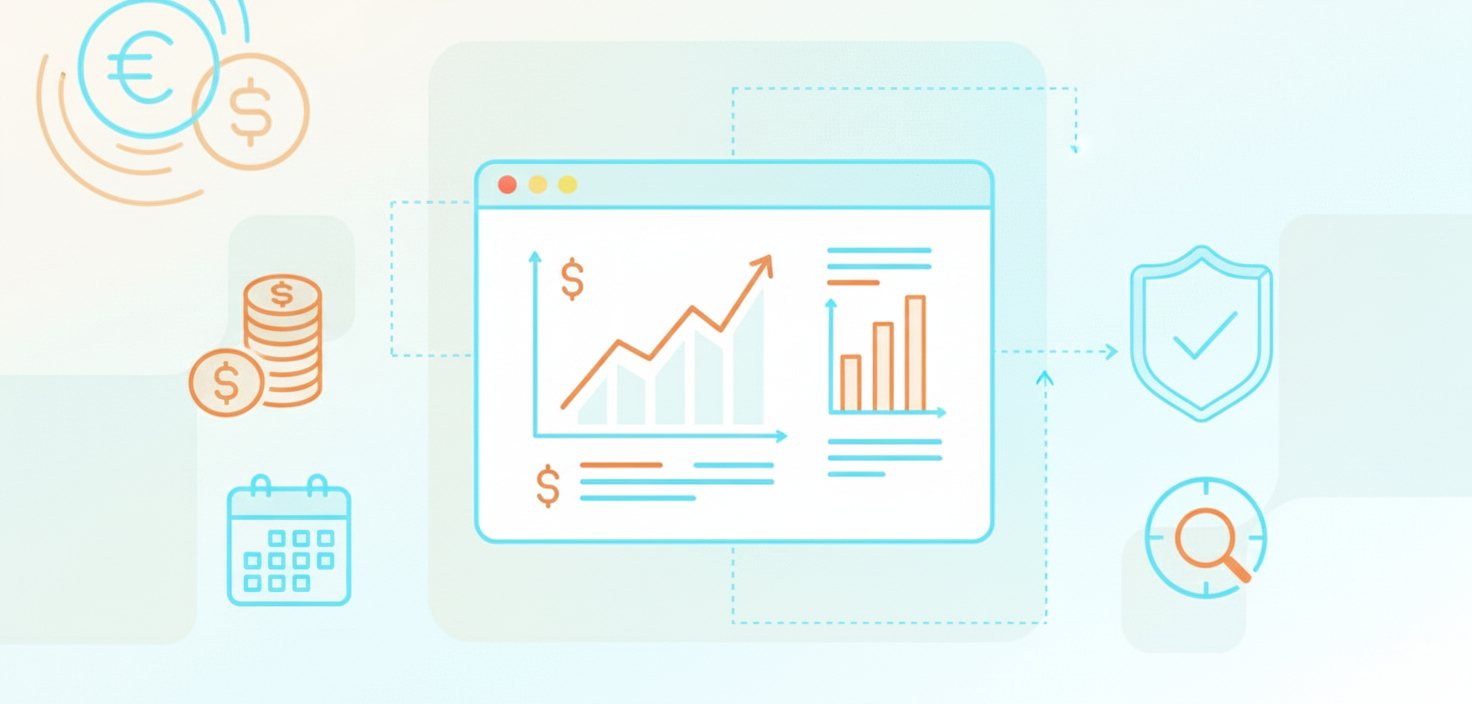財務管理に影響を与えることができます。
SaaS収益予測とは何か?

SaaS収益予測とは何か?
SaaS収益予測とは、サブスクリプション型ソフトウェアビジネスの将来の収入を推定するプロセスです。
これはサブスクリプションからの経常収益を予測することを含み、SaaSモデルの性質上、動的なアプローチを必要とします。
予測は、キャッシュフロー計画、顧客獲得、製品戦略を事業目標と結びつけ、リスクと機会を特定する財務上のロードマップとして機能します。
SaaS収益をどのように予測しますか?
SaaSの収益予測には以下が含まれます。
SaaS収益成長戦略を策定するには、まず以下の点を考慮してください。
- 経済動向
- 過去の販売データ
- 市場トレンド
- 顧客行動。
過去の成長率に基づいた直線法(ストレートライン法)など、将来の収益を予測するための特定の手法を採用します。
予測には、次のようなさまざまな要素を統合します:
- 経常収益
- 新規顧客獲得
- アップセル
- 解約
- エンゲージメント指標
- 利用パターン
- リードジェネレーション
- コンバージョン率
- 価格戦略。
シナリオ分析を活用して異なる仮説を検証し、予測不可能な市場状況に備えましょう。その際、次のような主要指標に焦点を当てます:
- ARPU
- ARR
- MRRは、月額サブスクリプションからの予測可能な定期収入を表します。
- 顧客獲得コスト
- LTV
- 顧客獲得コスト (CAC)
- チャーン。
予測プロセスにはBIプラットフォームと分析ツールを活用し、市場調査とシナリオプランニングを通じて、精度と市場のダイナミクスへの適応を目指しましょう。
SaaS収益にどのような要因が影響しますか?
SaaSの収益は、次のような要素に影響を受けやすいです:
- 市場のダイナミクス
- 経済動向、競合他社の価格設定ポリシー、および製品の導入率が収益に影響を与えます。その収益は、ARR、MRR、GRR、そして‘マジックナンバー’といったいくつかの主要な指標から算出されます。
- 顧客獲得コスト(CAC)の回収期間、選択された収益モデル、スケーラビリティ、顧客維持、製品利用、および長期的な関係。
- 事業運営コスト:ソフトウェア、人員、マーケティング関連の費用に加え、セールスおよびマーケティングファネルの有効性、チーム構造、報酬モデル
- 競合製品。
CACは予測にどのように影響しますか?
CACは、新規の有料顧客を獲得するための平均コストであるため、SaaS企業の収益予測において重要な要素です。
正確なCAC予測により、企業は以下が可能になります。
- 成長計画を立てる
- 収益目標を達成するために顧客ニーズを予測する
- 顧客基盤の持続可能性を評価する。
加えて、消費者信頼感、過去のCACレベル、サービス提供市場数、およびモデル開発と平均マーケティング支出の代替指標(aMER)の試行における営業と財務の協力もモデルに含めるべきである。
予測分析とリアルタイムを統合する データ分析 チャーンの兆候を特定し、潜在的な収益損失の影響を排除するため。
予測においてARRの役割は何ですか?
SaaS企業では、 年間経常収益(ARR) は、収益予測のプロセスにおいて非常に重要です。なぜなら、それは〜を通じて生み出される期待収益だからです。 サブスクリプション 1年間で。
正確なARR予測は以下に役立ちます:
- より良い計画立案
- 採用計画の策定
- 投資家とのコミュニケーション
戦略的な決定は、財務状況と拡大の可能性に関連しています。
次のステップを検討してください:
- ARRと MRRは、月額サブスクリプションからの予測可能な定期収入を表します。 収集された値。
- サブスクリプションファネルと拡大のパターン(拡張MRR またはARR)。
- 安全で信頼性の高い長期予測のために、安全マージンを含んだ詳細な財務モデルを作成します。
結論
SaaS収益予測は、将来の収益予測が求められるSaaSビジネスの運営にとって不可欠です。
これらの要因には、市場の状況、顧客獲得コスト(CAC)、維持率またはチャーン率、年間経常収益(ARR)、およびマーケティングファネル情報が含まれます。
SaaS収益予測は、ビジネスの成長、リソースの有効性、およびサブスクリプション型モデルに特有の課題の事前把握に影響を及ぼす可能性があります。